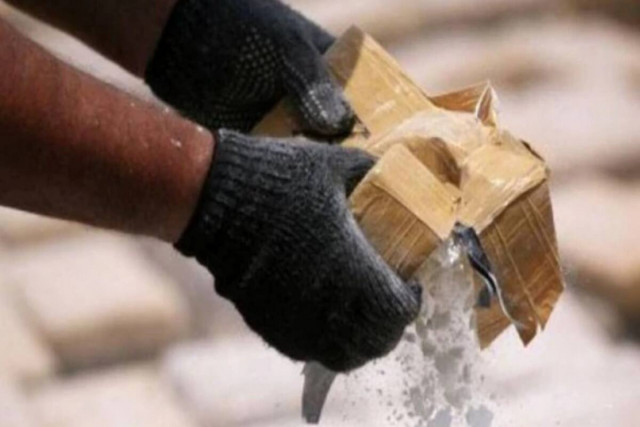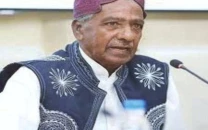Ghost of drugs looms over K-P youths
As many as 10.9 per cent of the province’s population feared to be affected by drug usage

At the tender age of just 14 years, Sohail, a youth from Peshawar was checked into a private drug rehabilitation facility for regular use of Ice— a form of the potent stimulant drug methamphetamine.
“I was even younger…much younger when I was first introduced to hashish, which I’d often see my friends smoking willy nilly. It always intrigued me, until I puffed some myself. Once the novelty of hashish died, they introduced me to ice and other injectable drugs. Ice became my poison of choice and I kept feeding to my vices until I couldn’t function without it anymore,” recalled the youth, who’s now a month into detox.
When consumed, Methamphetamine, which stimulates the centeral nervous system, is known to dramatically increase levels of the feel-good hormone dopamine by up to 1,000 times the normal level. Which is why users of the drug may often experience a unique high; increased sex-drive and an unmatched sense of pleasure and clarity. However, that sensation only lasts a few hours and the ghosts of reality are ready to haunt once the stimulant starts to wear off. As the drug users get calmer, they are likely to feel and experience the very opposite of their high— lack of clarity, blinding headaches, a sense of gloom and trouble making decisions. Over prolonged usage, the person is susceptible to becoming increasingly aggressive, anxious and paranoid. If not aided, they may eventually lose all sense of reality.
Although Sohail now fortunately has access to rehabilitative help, the youth still falls among the 10.9 per cent people in Khyber Pakhtunkhwa (K-P) who were classified as drug-dependent, in a jointly produced report of the United Nations Office on Drug and Crime (UNDOC) and Ministry of Narcotic Control.
The report, which was published in 2013, estimated that at the time at least 7.6 million people in the country were regular drug users, with a majority aged between 25 to 39 years. Out of which some 860,000 people were using heroin, 320,000 were using opium and over 1.06 million ranging between the ages of 15 to 64 were regular users of various opiates.
“Regrettably, that was the last survey of its kind counted in the country. After 2013, we have no comprehensive report of drug user analysis in Pakistan. But judging from what we see, the numbers for K-P appear to have grown many folds since then and there’s a whole new crop of drug users in the province,” said DOST Welfare Foundation’s Deputy Manager Syed Ali Naqi.
A smaller study conducted on causes of drug abuse among university students in Pakistan however, suggested that almost 96 per cent of times the lure is owed to peer pressure. Other reasons include educational stress, which corresponds to 90 per cent of the cases and inquisitiveness, which offered as a reason by over 88 per cent of students associated with drug use. The report also estimated that drug usage among youths and students in the country is growing at an alarming rate of 40,000 users per year, which merits the need for a deeper focus on rehabilitation in Pakistan.
According to Naqi, who works closely with drug demand and harm reduction, much of the drugs in K-P today flow from neighbouring Afghanistan. “The country is a major producer of opium, which in copious amounts is smuggled into Pakistan, via K-P,” he commented.
Speaking in the regard, Social Welfare Department District Officer Younas Afridi said that there are current 11 drug rehabilitation centers in the province, out of which five are yet to be made functional. “We have also formed a special squad in Peshawar to pick up addicts in special vehicles and admit them in rehab for treatment. The current government is extremely serious about cutting the head of the rampant drug issue from our region,” he added.
Published in The Express Tribune, January 27th, 2021.



















COMMENTS
Comments are moderated and generally will be posted if they are on-topic and not abusive.
For more information, please see our Comments FAQ